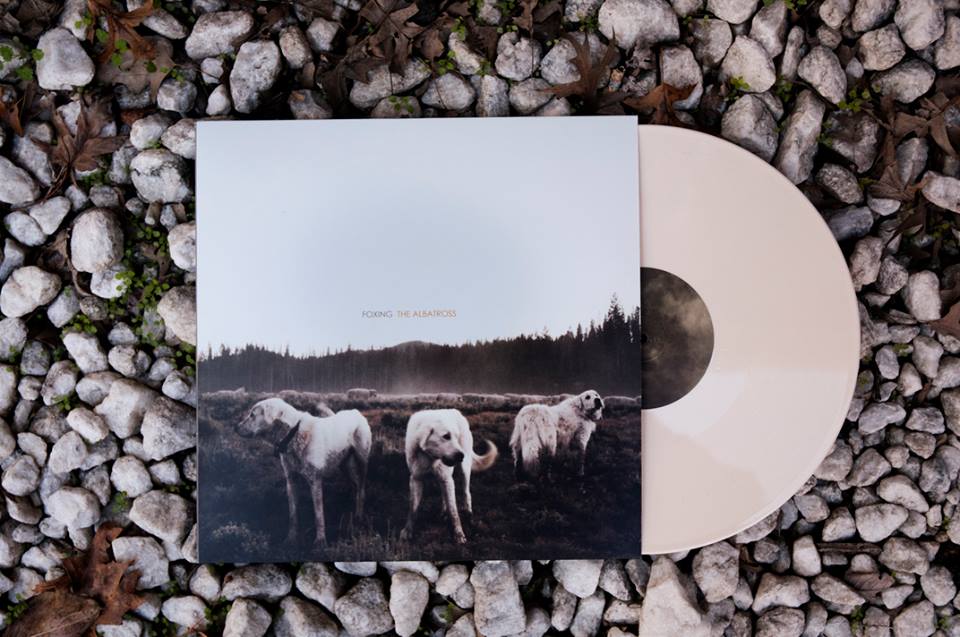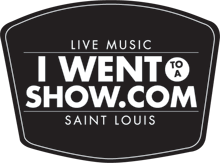TWOFER: Friday, November 15th – Foxing Album Release at The Firebird
November 15, 2013
NOTE: This week’s TWOFER is so great, we’re giving each half its own blog post. For information on another notable local album release show happening this evening, head here.
For a year or so, the young and charismatic Foxing has been developing a following in the Midwest and beyond with a few short-form releases (an EP, “Old Songs”, and two 7″ splits), slick branding/designs, a killer performance at An Under Cover Weekend, and a handful of tours. Their hard work has paid off and the band now has their debut full-length record in the cannon, ready to be let loose tonight at Firebird. Foxing talked to me about the process-to-product work on The Albatross, recording with Ryan Wasoba, and more:
 Foxing. Photo by Edward Hayden Molinarolo.
Foxing. Photo by Edward Hayden Molinarolo.
Talk about choosing to record with Ryan Wasoba (and performing with him as Neutral Milk Hotel at AUCW, if you’d like). What was that experience like, learning from a young, yet veteran, STL artist?
We all consider Ryan to be one of our close friends, so it was kind of a no-brainer to work with him on The Albatross. We’ve all worked with him in the past and have a really productive and interesting working relationship with him. All said, Ryan has completely earned our trust. When we write, we have a vision for how the final product will come across; Ryan is the same way when we start recording – he has a vision for it. Collaborating with him is a very rewarding process. Ryan isn’t the kind of engineer who just sits back and hits record. He’s very invested and hands-on. He understands our pace and facilitates our desire to experiment, while at the same time keeping us grounded. I don’t know how he is with other bands, but I would venture to guess that whenever he takes on a project, he puts a lot of himself into it; you can’t really ask for more than that.
We talked a little bit about the possibility of recording our next record with someone else, and if that ends up happening I’m sure it will feel pretty foreign, so much so that if that day comes we’ve expressed the desire to bring Ryan with us as an engineer.
How did you guys get hooked up with Count Your Lucky Stars, and how does working with an out-of-town label line up with your band’s ambitions for this album and beyond?
Count Your Lucky Stars is home to so many bands that we admire. In terms of the reemergence of Midwestern punk and emo, they were always fairly ahead of the curve. Even labels that are bigger seem to constantly tip their hat to CYLS. When we were recording The Albatross, they were one of the labels that we talked about, and it was really nice that they approached us instead of the other way around. We were signed to their label while on the second-to-last day of our first tour, which was a very surreal and reassuring experience.
To make a long story short, we played a show with the owner of the label’s band and he asked to put out our record about thirty seconds after our set. For us it doesn’t matter where the label is headquartered, we want a label that understands us, cares about us, and is just as excited for our work as we are. I can say that we are very fortunate…CYLS has opened up a lot of opportunities for us.
Who designed the album art?
Kevin Russ did the photography. I would highly recommend that everyone check out his work; it’s fantastic.
The title of the record, I’m assuming, is a reference to the iconic and damning bird image so prevalent Coleridge’s “Rime of the Ancient Mariner” rather than from Susan Hill’s novella, The Albatross. Hitting on the former, this album takes on a sweeping, hazy, nautical quality throughout thanks to hard-hitting vocals strung out across gorgeous arrangements.
Talk about using a canonical and familiar piece of literature to illuminate new pieces of art. How did you incorporate the feelings evoked from Coleridge’s work into your original writing and song constructions?
I interpret the allegory of the albatross to be a reflection on self-induced bad luck. In Coleridge’s poem, the albatross represents good fortune, so when the titular character makes a decision to shoot it down, he inadvertently affects the well-being of everyone around him.
I think that a lot of times when people are dealt a heavy hand they can defer the blame to outside sources, which may make it easier to cope, but it’s immensely more difficult to deal with bad luck when you’ve completely brought it on yourself. With our record, we felt kindred with a lot of downtrodden writers, not just Coleridge, but McCarthy, Neruda, Bukowski, Fonte, Smith, etc. However, I feel the connectivity was thematic and conceptual, rather than literal. We owe a lot of ourselves to the writers that inspire us, but at the end of the day, our album is not a genuine interpretation of anyone’s work or lives but our own. The songs are deeply personal, to the point that some of them are hard to play over and over again; it’s like bringing yourself back to that headspace every time. Concepts like isolation, distance, obsession, emotional detachment, self-demonizing behavior, stress, and longing all run rampant throughout The Albatross.
I like the symmetry of the first and last songs on the album. What was it about the contradicting vastness and containment of large bodies of water that struck you enough to make it one of the first and the absolute last image on The Albatross?
Well, for starters, I grew up in Northern California, right next to the ocean. I, personally, have always felt very much tied to it. I find that whenever I go back to the ocean, I’m immediately overwhelmed with nostalgia and a sense of calm. It’s in the sounds, the air; it’s in my blood.
There’s a duality to the ocean, however.
Sitting by the shore is one thing, but the further you go out, there’s sadness and loneliness that comes with you…the ocean is uncertain and unpredictable. When you’re out there—like really out there, with water as far as the eyes can see, surrounded by complete openness, it’s really interesting how internalized you find yourself. At least that’s how I feel. I love the idea that something as vast and enveloping as the ocean can be so kindred to the smallest idiosyncrasies of human connectivity.
We tried to use oceanic imagery throughout, as a metaphor for something unattainable and as a repeated image of a home that no longer feels like home, as well as something that separates and isolates people from one another. In regards to the first and last song, it was a conscious decision to connect the two and to have them serve as bookends to the record. I think those two connected lines are the best representation of the overall message of the album.
Finally, where and how can we get The Albatross? Will it be all ready for sale at the Firebird release show?
You can pick up the record from Count Your Lucky Stars’ webstore, our Bandcamp, at one of our shows, Amazon, Best Buy, iTunes, Spotify. Pretty much wherever.
Foxing is Conor Murphy (vocals, trumpet, piano), Eric Hudson (guitar, backing vocals), Ricky Sampson (guitar), Josh Coll (bass, backing vocals), and Jon Hellwig (drums). Details of tonight’s release show at The Firebird w/ Dots Not Feathers, Bear Hive, and Parisian can be found here.



Comments (1)
Pingback: TWOFER: Friday, November 15th, Part I – Ellen the Felon CD Release at St. Louis Skatium! | I Went To A Show